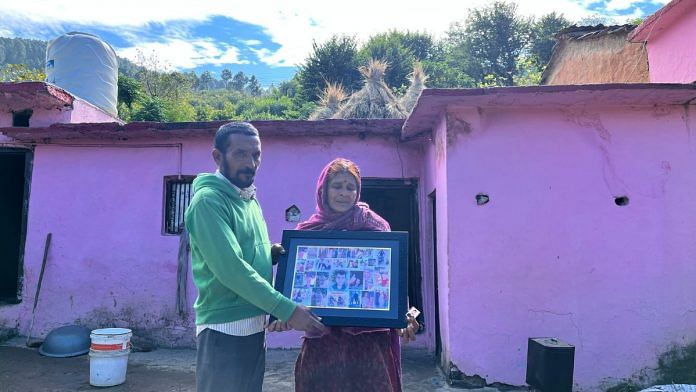Sumit Kumar ran like there was no tomorrow. At 23, it was his last chance to serve India. He made it to the end of the 1.6-kilometre circuit, but just as he was about to cross the line, the recruiters dropped the ‘finishing rope’ onto the ground. At that moment, he knew he had failed the Indian Army’s Agniveer physical fitness test. The Army’s doors were closed to him forever.
Kumar returned to his village in the hills of Uttarakhand on 24 August 2022. He spoke to his brother over the phone, skipped dinner, wished his parents goodnight, and retreated to his room in the family’s two-storeyed house. At midnight, when the village slept, he rose from his bed and hung himself in his room.
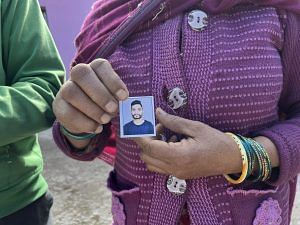
Six months ago, violent protests erupted across India — a loud and summary rejection of the government’s four-year Agnipath Scheme. But now, the rising suicides among Army hopefuls demonstrate the desperation of India’s unemployed youth – even for a four-year job.
Ever since the Indian armed forces started the recruitment process, instances of aspirants ending their lives have been cropping up with depressing regularity in the media. All news reports of young men and their shattered families are disturbingly similar: ‘Uttarakhand man, 20, dies by suicide after failing to clear Agniveer test’; ‘Uttarakhand: 23-yr-old dies by suicide failing in Agniveer recruitment’; ‘Haryana: Jind Army aspirant ends life over Agnipath, had spent two years waiting’.
For youth in Uttar Pradesh, Rajasthan, Bihar, Uttarakhand, and other parts of India, rejection from the Army is a point of no return.
Like Kumar, 22-year-old Vikrant Som had spent years preparing to join the Army. “Forget four years; I can die for a four-day Army uniform too,” he used to tell everyone around him.
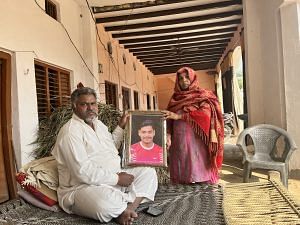
On 15 October, three days after failing to make the cut, he hanged himself. Kumar and Som were among the millions of Indians who had registered their names under the Agnipath Scheme for a four-year tour of duty with the Army. As of September 2022, more than 3.5 million candidates competed for 40,000 posts in 96 Agniveer recruitment rallies.
Urban India moved away from the lure of military jobs at least three decades ago. Today, many aspirants are unemployed youth from small towns and villages. And with recruitment drives halted in 2020 and 2021, the pressure and competition are all the more intense this year.
“Earlier, there was a continuous yearly process, and windows were open for many attempts. Now, the batches are big, and there is cut-throat competition,” said Major General (Dr) Yash Mor (retired). But that window was closed.
“Uncertainty has taken over every conversation. I think this will take two or three more years until the Fauji (Army officer) charm goes away. Then youth will look for other jobs with better pay and perks,” he added.
According to a report by the Centre for Monitoring Indian Economy, the rural unemployment rate shot up to 7.8 per cent in October from a four-year low of 6.4 per cent in September. The authors highlighted the drop in labour participation rates in October, which they write is cause for “great concern”. Though it’s a slight fall, it has been “consistently below 40 per cent since May and, in a sense, also since January, as it rose above 40 per cent only in April.”
Behind each statistic about Agniveer aspirants is a personal tragedy of nationalism and optimism curdling into cynicism and despair.
Also read: ‘Agnipath’ scheme for military has good intentions. But Modi govt should conduct trials first
An excellent runner who failed his last race
Thirty kilometres from UP’s Meerut, residents of Kapsarh village wake up to the sound of their young men running past their homes, the heavy thuds of their shoes hitting the ground in rhythm.
“This is one of the 24 Rajput-dominated villages in Meerut district, and most youngsters train for the Rajput Regiment. It’s a matter of employment and prestige,” said Vikrant’s uncle, Radhe Shyam, a former Army officer.
When the men are not running, they work in their family’s sugarcane fields, feed cattle, or drive tractors. This year, in a village of 7,000 people, more than 50 men, including Vikrant, had registered for the Agniveer recruitment drives.
Towering over other recruits at six feet, Vikrant was an odds-on favourite to pass the physical tests. “He was an excellent racer and had a positive attitude,” said a family member.
A teenage cousin, Nishant Som, scrolls through his Instagram account, which serves as a visual repository and memory for his grieving family and friends. Almost all the photos and hashtags are about the Army. One shows Vikrant flexing his biceps. In another, he proudly displays his six-pack abs. “And he got this without going to the gym,” said the cousin, who used to accompany Vikrant on his daily runs.
“Come back to us,” he wrote in one Instagram post where a smiling Vikrant looks straight into the camera.
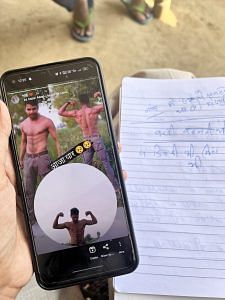
It’s been two months since their son took his life, but his father, Sudhir Som, 46, re-lives the “wretched” morning he discovered the body—every day.
“We have eight bighas of land. He could have done something other than the Army,” said Sudhir, who took to farming after completing Standard X.
Joining the Army was Vikrant’s childhood dream. Every time his uncle brought Army vests and t-shirts, his eyes would light up,
His mother, 42-year-old Kavita Devi, nurtured his dream with milk, almonds and dates. “I would soak black chana overnight,” recalls Kavita, crying profusely.
Like candidates preparing for the competitive civil services entrance test, Vikrant knew that training for the Army was a marathon, not a sprint. This was not his first rejection. After scoring 65 per cent in his Class XII board examinations, he registered for his first recruitment rally in 2018 in Saharanpur. He didn’t make the cut. “He said he fell down because someone pulled his leg. He could not complete the race,” his father recalls.
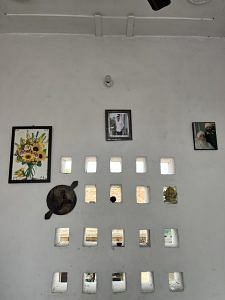
But that didn’t matter. He was 18 years years old and had at least four-five chances. Vikrant tried again the following year at a rally in Baghpat. When he missed the mark, he returned to the drawing board to re-jig his training regimen. Time was still on his side.
“That’s when he made it his mission to master the 1600-metre race in 5:40 minutes. He ran non-stop,” said his younger cousin, Nishant.
Vikrant was ready, but when Covid-19 hit, the Army suspended all recruitments. He had run out of time, and this year was going to be his final attempt.
Also Read: ‘Tour of Duty’ will expose youth to military life. Don’t let bureaucracy fail it like note ban
Agnipath aftermath
After a dry recruitment spell, the government announced a new scheme in June 2022. Called Agnipath, it was marketed as a ‘tour of duty’ for eligible youth between 17-and-a-half and 21 years of age. It did not offer service for life but a four-year stint. In each batch, only 23 per cent of Agniveers or recruits would be selected to serve the Indian Army for another 15 years.
For millions of Indian youth, it was a betrayal. The defence policy reform was met with violent protests across the country. Bihar, Jharkhand, UP, Haryana and Rajasthan became its epicentre.
Mobs set trains, police stations and buses on fire, and the Indian Railways suffered losses of over Rs 700 crore. By June, nearly 2,000 people had been arrested in UP alone. Mass FIRs, however, did little to stem the tide of violence.
“Is this what you call “Jai Jawan Jai Kisan (Hail the soldier, hail the farmer)?” cried angry protesters.
To appease them, the government raised the age limit to 23.
From Patna to Punjab to Kerala, people turned to the nation’s high courts to challenge the scheme. The matter then reached Supreme Court, which transferred the petitions filed before it to the Delhi High Court.
Military experts and Army top brass—both retired and serving—are divided over the Agnipath Scheme. Lt Gen H. S. Panag (retired), for instance, called it ambitious but flawed. Lt General (Dr) Prakash Menon (retired) argued that merit should be the benchmark for hiring and not the recruitable male population index.
For now, though, Agnipath remains the only road to the Indian armed forces.
Recently, Ajay Bhatt, the Minister of State for Defence, told Parliament that there are 1,35 lakh vacancies in theArmy, Navy and Air Force. But the number of applicants is overwhelming.
In July itself, within a month of the announcement of recruitments, the Air Force received nearly 8 lakh applications for the posts of 3,000 Agniveers. During the same period, the Indian Navy received a million or 10 lakh applications for the same number of vacancies.
Also Read: Army’s ‘Agnipath’ plan is ambitious but has flaws. Here’s how it can be made more attractive
Unhappiness loomed large
By all accounts, Vikrant Som and other Army aspirants in the village were unhappy with the new scheme.
“But my son neither complained nor participated in any protest. He waited patiently for the first rally,” said his mother, Kavitha Devi. He even relocated to Meerut to train with his retired Army uncle in the intervening months.
On 10 October, Vikrant travelled to Muzaffarnagar for the recruitment rally. More than 8,000 young men had turned up for the physical test despite heavy rain. When it continued to pour, recruitment officers halted the race and postponed the rally to 12 October. Most aspirants lived too far away to return home.
“We spent the day at railway stations and bus stands, drenched. There was no food or water. But nobody wanted to go home and come back. This was it,” said another aspirant from Kapsarh village. They had waited more than two years, and another day “was not a big deal”.
Vikrant called up his uncle in Meerut for morale-boosting and last-minute advice.
“I tried to lift his morale. I told him that these are the hardships a soldier must go through. I wished him luck,” recalled his uncle, Radhe Shyam, who runs a ‘finance shop’ for small loans and banking purposes with another retired Army officer in Meerut. He knows how competitive the rallies can get. Shyam assured his nephew that he would help him set up a small business if he didn’t get through.
Around 2 pm on 12 October, Vikrant ran with 400 candidates. For the first hurdle, candidates have to complete a 1.6 km race. Recruiters stand on either side with a ‘finding rope’, which they drop after 5: 40 minutes. Those who cross the rope before it is dropped make it into the first round of selections.
“But they dropped the finding rope even before 5:40 minutes,” alleged a fellow aspirant, 20-year-old Vishal Kumar.
A devastated Vikrant was too ashamed to return home. His grandmother, Shanti Devi, convinced him to come back.
“He was sobbing on the phone. ‘Bibi, I could not clear the race,’ he told me. I didn’t know where he was hiding, but I reminded him that even his hero, Radhe Shyam, was able to clear the physical test after four attempts,” said Shanti Devi.
The young man finally returned home but refused to consider other career options.
His routine had been upended. Before the recruitment rally, he would feed cattle at 4 am and then train for three hours before accompanying his father to the fields. Now, there was no reason to train.
“His successful attempt at clearing the CISF [Central Industrial Security Force] exam [physical test] meant nothing to him. He stopped preparing for the written examination scheduled in December,” said his cousin. Instead, he asked his family and friends to collect crackers to celebrate Diwali.
“But it was ten days before Diwali,” said his cousin, who was puzzled by Vikrant’s request.
On 15 October, around 3 am, he left to feed the cattle. At 7 am, he drove the tractor to the fields. And never returned.
“I called him 12 times, but he never picked up his phone,” said his mother. By 11 am, she was frantic and convinced her husband and another family member to search for him.
“We found him. He was hanging from the rosewood tree,” said his uncle, Vipin Som.

Later, they cut down all eight trees in the grove. But it didn’t help exorcise the pain.
“Every time I go there and look around, I see his body,” said Vipin.
His last WhatsApp status read: “In order to achieve anything in life, one has to be mature enough.” His final text to a friend revealed the depth of his anguish. “I am ashamed of myself. I failed that race. How do I face my uncle?” he wrote.
This sentiment reverberates across rural India, where young men look to the Indian Army for prestige and honour.
“The Army is the maximum celebration of manhood,” said Major General Neeraj Bali (retired). It is an obsession.
Also Read: Modi govt & armed forces should cut personnel by another 10%, not recruit to fill ‘deficit’
They kept waiting, waiting and waiting
It wasn’t as if Som and Kumar didn’t have any other option. It’s just that their heart was set on the Army and nothing else.
Vikrant Som had cleared the physical tests for the CISF, and Sumit Kumar had done the same for the Uttarakhand police recruitment drive. But neither was interested in giving the written examination— not with the lure of the armed forces.
“His standard reply was: I don’t want to go to CISF. I want to join the Army,” said Radhe Shyam.
Sumit, too, ignored all advice to look beyond the Army. “He didn’t want to become a policeman; However, to keep his momentum going, he registered for physical tests. It was also a way to test his strength for Army recruitment,” his father, 55-year-old Tajvar Singh, told ThePrint.
“This Army culture is distinct and has spread across rural India. Once someone joins the Army, every one from his immediate family to extended family members to his entire village feels that they are part of the Army. It is natural for any growing young man to feel like a claimant in securing an Army job,” said Bali. “This disparateness is heartbreaking,” he added.
Major General (Dr) Yash Mor (retired) calls it desperation. “The Army didn’t recruit for years but kept promising to start rallies,” he said.
They kept waiting, waiting and waiting, said More. “Banking on the promise of recruitment, the vast majority of rural youth did not upskill themselves.”
But the absence of conversations around rejection, failure and a new life in the hinterland makes things more difficult.
“The suicides are a reflection of the immense pressure that young people are facing in India to secure stable employment with decent wages,” said Professor Vikram Patel of Harvard University’s T.H. Chan School of Public Health.
He compares it to students ending their lives after a disappointing performance in competitive entrance tests to prestigious engineering or medical schools.
Also Read:
The last chance
If Vikrant was compelled to join the armed forces to live up to his Rajput heritage, then 300 kilometres away in Uttrakhand’s Naugaon Kamanda village, Sumit Kumar was driven by the desperation to rise above his caste identity, and to bring dignity
Naugaon Kamanda village in the Pauri Garhwal district of Uttarakhand is tiny, with only 45 families. Its remote location is a double-edged sword that limits career choices of youth. Sumit dreamt of becoming a soldier, but unlike Vikrant, he could not afford dates and almonds in milk. He made do with bananas.
“He used to say to me, ‘You have lived a life of poverty, far away from dignity. I will bring pride to this family,’” said his father, a daily wage labourer.
The hopes of his scheduled caste family of six were riding on Sumit’s dreams. Now, they are coping with death and despair. A large collage of photos of Sumit with his friends and loved ones hang on the verandah.
His mother, Dhanedshwari Devi, 50, avoids the kutcha room where Kumar was found hanging from a ceiling fan on 25 August this year.
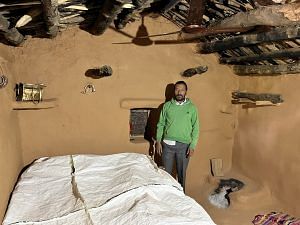
“I don’t have the courage to open the door. The rally killed my son. He was better off being unemployed than dead,” she said.
Outside in the village, Dhanedshwari points to a large ground where solar panels have been installed to generate electricity. “He had helped build this new infrastructure around the village and town,” she said.
His family can’t remember exactly when he decided to join the armed forces. All they remember is Kumar tying his shoelaces, waving to them as he left the house, only to return in hours.
“He used to motivate the other 15 aspirants from the village and tell them that shame would call on them if they didn’t bring good news home. He would force them to run,” his mother said.
The only fauji in the village they could go to for advice was a retired Army officer who worked as a security guard in a factory nearby.
Sumit was disappointed when the Army cancelled recruitments during Covid but trained religiously. He finally got the chance to register for a spot in the Garhwal Rifles at a rally in Kotdwar district from 19 August to 31 August. More than 63,000 Army aspirants from seven districts of the Garhwal division tried their luck that day.
“The rope fell down at 5 minutes 25 seconds when he was just inches away from crossing it. It was a matter of a few seconds,” said his elder brother Amit, 23, who is training to join the police force.
The irony is that Sumit had cleared the Army’s physical fitness test four times in the past but had not received medical clearance in any of the rounds because of problems in one of his fingers. That day, for the first time, he failed in the race.
He came home at 8 pm on 24 August and said just one line: “I could not even clear the physical test this time.” He took a bath, sipped some tea, and retreated into his room.
“I went to him around 10 pm. Have dinner, my son, I told him,” his mother recalls.
Around the same time, he called his brother Amit, who lives in New Delhi. “He told me he was going to sleep. You sleep too, he said, and hung up,” recalls Amit.
The next morning, his mother made some tea and sent his father to wake him up. That’s when they found his lifeless body.
The family refused an autopsy, and there was no police case either.
His mother brings out a pile of files stuffed with documents. One document stated that Sumit was due to sit for a written examination for the Uttarakhand Police recruitment drive, which he had already cleared. It’s a painful reminder for Dhanedshwari Devi of what could have been.
“My son used to tell me that one day he would come home wrapped in a Tiranga.”
(Edited by Zoya Bhatti)


